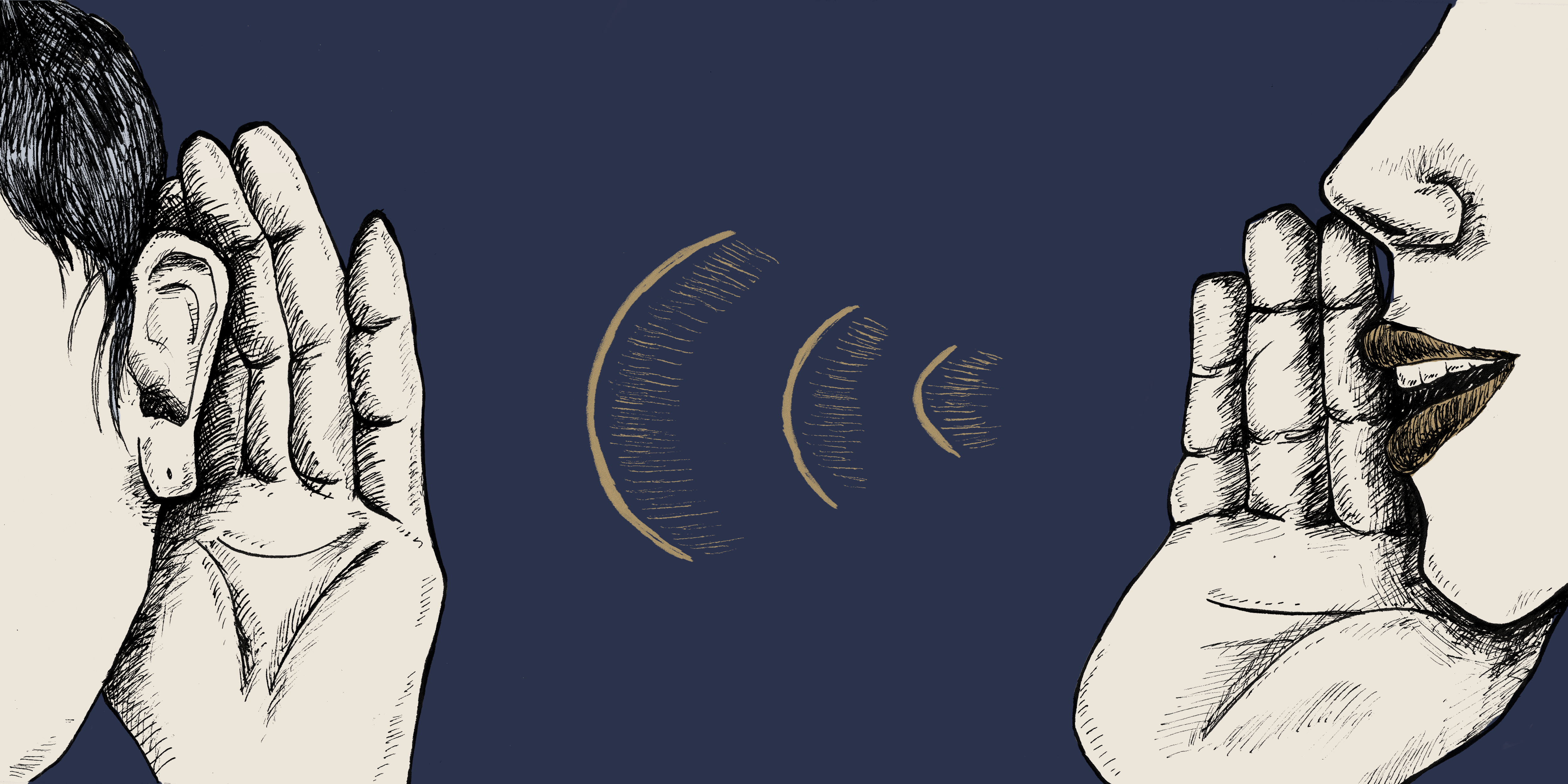Hearing plays a major whole in how we interact in the world around us. Talking with friends and family, listening to music, and hearing oncoming traffic are just a few examples of how hearing is deeply integrated into our day-to-day living experiences. But, despite its importance, 1 in 4 Americans is already showing signs of hearing loss (1). So you heard it here first (just maybe not as loud as you should have) — hearing loss is on the rise.
Hearing loss is becoming near-endemic in its numbers, as more people every year are slowly losing their ability to hear as well as they used to. The most frustrating part about this rise in hearing loss is that, unlike many other injuries, noise-related hearing loss is both impossible to repair and completely preventable. While education about the importance of protecting our hearing is more common today, it appears that compliance with wearing the needed protective equipment is lower than it should be. According to a recent survey, roughly 70% of people who are regularly exposed to loud and damaging noise levels do not wear any form of personal protective equipment (2).
As the prevalence of hearing loss continues to rise around the world, we need to find ways to integrate safe hearing practices into our regular living routines. Hearing loss is steadily climbing the list of chronic health conditions, and without intervention, hearing loss will become a health problem of global proportions.
Our noisy world is to blame
As our society becomes more advanced and modernized, the amount of noise that we are exposed to on a daily basis has increased. From densely packed cities with loud ambient noise to loud personalized headphones to blast your favourite song directly into your ears, we are exposed to a ton of loud sounds every single day.
Sound volume is measured in a unit called the decibel. The lower the decibel level, the safer prolonged exposure to that noise is for the health of your ears. Some common examples of sounds and their decibel levels are (5):
- 0 - 60 decibels — Whispering, a watching ticking, refrigerator noises, and normal volumes of human conversation. These levels of noise are not considered dangerous and are not likely to cause hearing loss.
- 70 - 85 decibels — A running washing machine or dishwasher, city traffic from inside a car. These levels may cause irritation and annoyance.
- 85 - 110 decibels — A lawnmower, motorcycle, live sporting events, and using headphones at maximum volume. These levels will result in hearing loss after as little as five minutes of exposure.
- 110 - 150+ decibels — Shouting into the ear, standing next to sirens, and fireworks. These levels cause ear pain and damage immediately.
Noise exposure is the primary contributor to preventable hearing loss. Our daily exposure to sound pollution has gotten so loud that we aren’t even able to properly identify the amount of damage it is causing. Because of this, the World Health Organization (WHO) has identified environmental noise as an underestimated threat to our overall health and wellness (3).
Our lack of understanding surrounding the true extent of harm that environmental noises have on our health can be seen in the rate of acceleration of hearing loss in many countries around the world. In the 10 year span between 2008 and 2018, the twelve most populated countries in the world have all trended upwards in the number of people experiencing hearing loss (4).
Important Hearing Loss Statistics:
- Due to the increased exposure to loud noises and the rise in the use of personalized headphones, nearly 50% of all people aged 12-35 (roughly 1.1 billion young people) are currently at risk of developing hearing loss (6).
- Profound hearing loss leading to disability is also on the rise around the world. While around 400,000 people were living with disabling hearing caused by preventable noise exposure in 2015, the number is estimated to skyrocket to over one million by the year 2050 (4).
- Men aged 20-69 have almost twice the risk of developing hearing loss when compared to women in the same age group (7).
- About 53% of adults living with hearing loss caused by noise exposure report that they have no on-the-job exposure, indicating that we truly do not understand the extent of harmful sound pollution we are exposed to on a daily basis (8).
Noise degrades our hearing by damaging small hairs inside our ears
Being able to hear sounds is not as simple as it may seem. Hearing a single tone involves collecting the sound waves through the outer ear, passing the vibrations through small specialized bones and hairs in the inner ear, and then sending that signal to the brain to be recognized and interpreted.
So how does exposure to loud sound cause damage to this system in the first place?
The primary culprit for the progression of hearing loss is the bending and breaking of our sound receptor hairs within our inner ear. When we are born, we have over 16000 tiny hairs within our ears that are responsible for detecting and transmitting sound waves to our brain to decode. Just like the blades of grass beneath our feet, these tiny hairs bend and move when sound waves interact with them. In short bursts of loud noise, the hairs can bend and bounce back into their normal position. But, when a person is exposed to long durations of loud noise, the hairs can remain bent or even break, resulting in hearing loss (8). Every hair that is damaged and unable to pass sound information onto the brain results in more profound hearing loss that is unable to be repaired.
It starts in the workplace
It is important to understand the true magnitude that even a change of 5 decibels can have on the safety of a given working environment. The decibel, which we discussed earlier, is actually measured on a logarithmic, or nonlinear, scale, meaning the marks on the scale are based on orders of magnitude. In this way, a noise level of 95 decibels is actually significantly louder than even 90, and so on and so on.
The official American government stance on sound exposure in the workplace follows guidelines from the National Institute of Occupational Health and Safety (9). Following their recommendations, they suggest that workers should not be exposed to sound volumes any louder than 85 decibels (roughly as loud as a lawnmower) from the duration of an eight-hour shift without hearing protection.
But it is important to recognize that 85 decibels are not necessarily the sound level that hearing loss begins. In a study conducted in 1974 by the Environmental Protection Agency, it was found that sound levels of 70 decibels or less were ideal for preventing noise exposure hearing loss (10). Because of this, the National Institute of Health now recommends a daily maximum volume in the workplace to be no more than 75 decibels (11).
So as you can see, daily exposure to sound pollution at work is a serious problem that many of us aren’t even aware of. And as a result, occupational noise exposure is the second most common risk factor in the workplace, behind workplace injuries.
It is also important to note that the duration of sound exposure is not always the primary culprit for hearing loss in the workplace. The permissible exposure limits of incredibly loud sounds (of 115 decibels or more) indicate that these sounds can cause significant damage to your hearing, even after exposure for a very short period of time (12). Because of this, it is highly advised that people working in loud environments wear hearing protection to prevent hearing damage from sudden loud noises.
Modern life is damaging our ears
The comforts of modern living are having a negative impact on the health of our overall hearing. Densely packed cities, increased traffic, and loud construction noises are all contributing factors to the loud and damaging environmental noise of city living. In a recent study, it was found that city living and hearing loss have a 64% positive correlation, indicating that where you live does have an impact on your risk for developing hearing loss (13).
In this study, 50 cities were analyzed to understand the impact of sound level and the number of people living with hearing loss (13):
- Of the 50 cities, Delhi was found to be one of the worst cities for sound pollution, alongside Guangzhou, Cairo, Paris, and Beijing. It was found that people living in Delhi recorded the highest average of hearing loss, with most people studied having a hearing level equivalent to someone almost 20 years older than their age.
- The cities ranked for the least sound pollution were Zurich, Vienna, Oslo, Munich, and Stockholm. Vienna had the lowest rates of hearing loss in their population, but still experienced a loss of hearing equivalent to someone 10 years older than their age.
Seeing these numbers, it is quite staggering to understand the impact that city living has on someone’s hearing health. People living in large cities are regularly exposed (against their will) to noise above 85 decibels from sources like traffic, subways, industrial activity, and airports, and that’s enough to cause significant hearing loss over time.
In addition to loud ambient noises, modern living has also brought additional sources of noise that we have grown accustomed to. Festival and headphone culture have widely taken off over the past decade, allowing people to be exposed to loud music and sound on a more regular basis. From 2003 - 2013, the rate of annual attendance to large (and loud) music festivals has increased by over 10 million people (14). Attendance at these events without proper hearing protection can cause significant hearing loss over just one single weekend event.
And what about listening to music or podcasts all the time on earbuds, the ubiquitous symbol of millennials? While regular use of headphones can be safe if used at an acceptable sound level, blasting music on high volumes directly into your ears can have a significant impact on your hearing. When cranked to their top volume smartphone can emit up to 100 decibels of sound, which can cause significant damage after only 15 minutes of exposure (15).
Hearing naturally gets worse as we get older
Alongside noise exposure, it is normal for our hearing to worsen with age. Over time, our hearing loss increased from 7% at ages 20-29 to as much as 68% by ages 60-69 (8). But, as you can imagine, it is difficult to determine what extent of hearing loss is from age-related causes (also known as presbycusis), and hearing loss that comes from noise exposure.
It’s More than Just a Loss of Hearing
For many of us, it is very easy to think of hearing loss as a minor inconvenience rather than a large-scale problem. While many of us would likely prefer to keep our hearing, the idea of progressively losing the ability to hear sounds may not cause a 911 emergency level of anxiety and worry. But, it is super important to understand that hearing loss impacts many other areas of our health and lifestyle.
At the individual level, the burden of hearing loss over a lifetime can be very substantial, and can even be exacerbated by negative societal attitudes and prejudice towards affected people. In general, hearing loss has a more profound impact on our day to day lives than we truly realize. Adverse consequences on interpersonal communication, challenges to psychosocial well-being, poorer quality of life, and a possible loss of economic independence are all examples of the large-scale impacts of hearing loss over time.
In children, early-onset hearing loss and exposure to noise pollution can lead to poorer speech and language development. These delays can have a significant impact on the child's future, as they can set the child on a trajectory of sub-optimal educational and career-based achievements.
In adults, hearing loss also comes with a multitude of negative lifestyle and health impacts. Adults living with hearing loss are more likely to experience social isolation and stigmatization, abuse, psychiatric disturbance, and depression. They are also more likely to have difficulties maintaining relationships with partners, friends, and children, and can even experience restrictions on their options for careers.
Even more shockingly, a recent study found that adults suffering from noise exposure hearing loss were more likely to experience a decline in their social, psychological, and cognitive functioning at an early age (1). Individuals with hearing loss can experience as much as a 30-40% acceleration in cognitive decline when compared to those without hearing loss (16). This acceleration has a dramatic impact on quality of life, financial stability, and individual independence at an even earlier age than many expect.
So as we can see, hearing loss is a serious chronic health condition that impacts billions of people around the world. As a society, we need to make a shift in how we understand, educate, and protect ourselves and others from the dangers of persistent sound pollution and short term exposures to loud noises.






